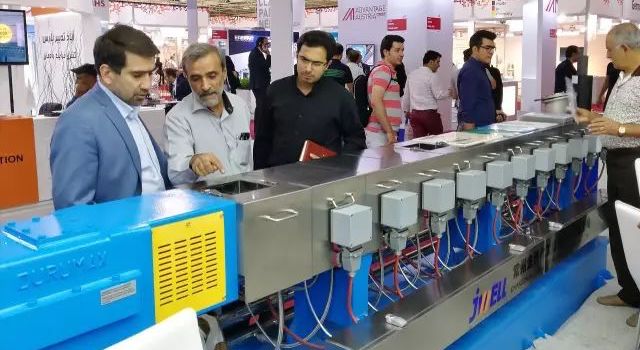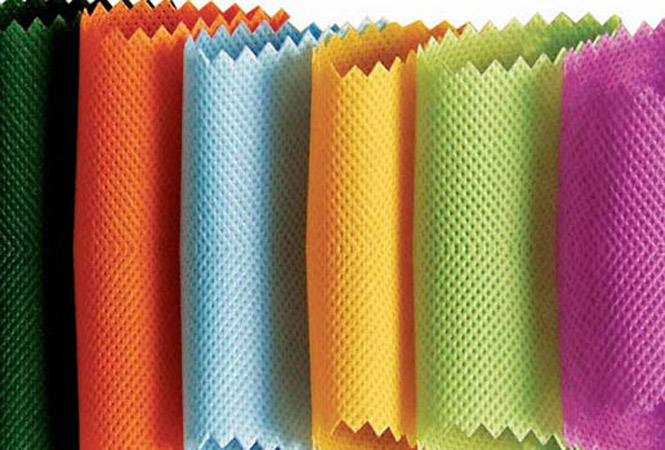The non-woven textile industry is one of the newest sectors of the textile industry. The nonwoven textile industry is very important today.
A group of textiles that do not have yarn and are formed by the entanglement of fibers is called non-woven Indusrty . The fibers are blended to make nonwovens; The fibers are then bonded using pressure, heat, shock, and in some cases chemicals. Nonwovens are composed of a layer of fibers; A layer of fibers that are arranged next to each other regularly or irregularly. The fibers in nonwovens are varied.
Some are short and some are long. Also, the fibers used to make nonwovens may be natural or synthetic. The process of producing non-woven textiles is faster. These products have many advantages and are used in industry, medicine, health, etc.
According to statistical estimates, about 30% of the world’s textiles are made from nonwovens. The non-woven textile industry is developing day by day and its popularity is gradually increasing. Non-woven textiles are expected to be much more important in the future, and a very large part of the textile industry will belong to non-woven textiles in the future.
The non-woven textile industry in Iran is one of the very new industries; In the last decade, and especially in recent years, more attention has been paid to the non-woven textile industry in Iran. That is why this industry has a good future. In recent years, Iranian companies have produced a variety of non-woven textiles for various applications.
In recent years, several Iranian companies have started their activities in the field of non-woven textile production. Due to the popularity of non-woven textile products, Iranian companies have expanded their activities. There is a very good ground for the growth of the non-woven textile industry.
At present, the world market welcomes the products of this industry. Iranian non-woven textile companies can both attract customers inside Iran and enter global markets by improving the quality of their products.
Entering global markets increases exports. Also, competition with powerful European and American manufacturers makes Iranian non-woven textile companies produce better products. However, several challenges are facing Iranian manufacturers and companies.
One of the obstacles to the development of the non-woven textile industry in Iran is not using quality raw materials. Many companies and manufacturers use substandard fibers and raw materials to produce their products. The reason for this is to reduce costs. Besides, political sanctions have placed restrictions on Iranian producers. For this reason, Iranian manufacturers do not have access to quality raw materials and can not buy quality fibres.
Another obstacle to the development of the non-woven textile industry in Iran is non-standard prices. As mentioned, the nonwovens industry in Iran is new. As a result, many non-woven textile manufacturers are competing in the market. In such circumstances, some companies and manufacturers of Iranian non-woven textiles offer their products at inappropriate prices.
High export costs slow down the growth of the nonwovens industry. Non-woven textile manufacturers prefer the domestic market due to high export costs. Because of the profitability of the domestic market in Iran is higher for them. Unrivaled activity in the domestic market harms product quality.
The nonwovens industry in Iran needs support. The government and its economic decisions can support the non-woven textile industry in Iran. The government can provide good ground for the activity and growth of Iranian producers and companies. If Iran’s non-woven textile industry is supported, it will grow much faster.
Paying attention to the challenges facing manufacturers and companies helps them grow. The government can help Iranian producers by supporting the non-woven textile industry and removing barriers to it. Government support along with private investment are two effective factors in the development of Iran’s textile industry.
Why is the nonwovens industry so popular?
The nonwovens industry has several advantages. Among the most important advantages of non-woven textiles are the following:
• Easy Recycling: Nonwovens can be recycled without the need for high costs or complex equipment. The process of recycling nonwovens and returning them to the consumption cycle is quick and easy.
• No environmental damage: Non-woven textiles are not harmful to the environment due to their easy recycling.
• Rapid production in large quantities: One of the most important economic advantages of the nonwoven textile industry is the rapid production of large quantities of products. These products can be produced in large volumes and meet the needs of many consumers. In the process of producing non-woven textiles, there is no stage of “turning fibers into yarn” and weaving. Because of this, these products are produced at a higher speed.
• Variety in products: The non-woven textile industry can meet the needs of different consumers. Non-woven textile industry products are very diverse and are produced for different applications.
Non-woven fabrics have features that make them very easy and affordable to use. Non-woven textile products have a high ability to absorb moisture. Non-woven fabrics are very soft and have high flexibility.
Therefore, they have elastic resistance in both vertical and horizontal directions. These fabrics have long durability. These fabrics can be easily washed. Some types of nonwovens are fireproof. All these features together have led to more attention being paid to non-woven textiles and these products are very popular.
The unique properties of non-woven textiles have made these products have many applications.
The most important applications of the nonwovens industry:
In general, most products in this industry fall into three groups: health products, medical products, and industrial products. It is added to the applications of non-woven textiles every day. These products can have many home and industrial uses due to their many advantages. Non-woven textiles are expected to meet a large part of domestic and industrial needs soon.
The main application of non-woven textile industry products is the production of health care products. The best sanitary masks are produced using non-woven textiles. The coronavirus is now prevalent and people all over the world need to wear health masks. In this situation, the non-woven textile industry is the best solution for providing health masks.
Also, hospital clothes, wound dressings, sanitary pads, and many medical textiles are supplied using non-woven textiles. Most non-woven textiles produced in Iran have medical and health uses.
Another important application of nonwovens is the production of paper towels. Also, nonwoven textiles are used in the production of paper, cloth cleaners, cosmetics, and even diapers.
People who come into contact with hazardous chemicals need special work clothes. Using non-woven textiles, safe and comfortable clothes can be made for this group of people to protect them against chemicals. One of the most important uses of nonwovens is to produce workwear for jobs that are exposed to hazardous chemicals and radiation.
Non-woven textiles are used to make insulation for power cables, synthetic leather, furniture, etc. These are the industrial applications of nonwovens. In recent years, the use of non-woven products in agriculture, civil engineering, and the automotive industry have increased. Nonwoven textile products can be made to have end-use characteristics. These products have a lot of flexibility and can be made for different applications.
Due to the widespread use of nonwovens and their bright future, extensive investments are being made in this industry. In Iran, several companies produce non-woven textiles. These companies can be highly profitable if supported.

























